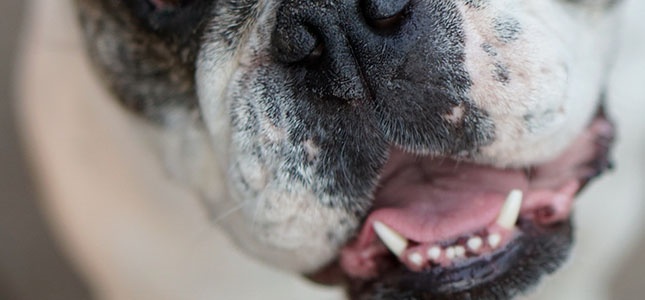
MVA Monthly Mouthful – Pet Dental Health Month
By Alyssa Mages, BS, CVT | Development and Education Coordinator
Open wide! It’s time for your dental evaluation and cleaning, please sit still, OK to rinse/spit, and don’t bite down – let me know if any of this is uncomfortable, then we’ll get your dental x-rays. Sound familiar? I know my recent visit to the dentist had a similar dialogue, but when it comes to our canine & feline family members, the conversation is a bit different.
Unfortunately, our furry friends don’t sit & say “AHHH!” to enable a thorough exam, and they simply don’t understand the don’t bite down, OK to spit, and hold this in your mouth directives either. In order to obtain a thorough examination, assessment, cleaning, x-rays, and/or any additional dental treatments, these pets of ours require more interventional medical assistance in the form of either sedation – exam/assessment, or general anesthesia – cleaning/treatments.
Why? Well there’s the moving-target reasoning of course, but also, it’s a real safety concern. Not only for the veterinary team, but for the pet as well. Having the cat or dog sedated or anesthetized enables a more in-depth analysis of any/all oral and tooth related concerns which can catch major problems – tooth root abscess anyone? – before they arise. It also allows a thorough cleaning, pictorial record via intra-oral x-rays, and advanced surgical techniques to be utilized in a timelier fashion, but most importantly a medically appropriate method.
So, how to address dental health in between these bi-annual or annual appointments? Yup, brush those chompers! Acclimating your pets to this at a young age does tend to have better, or at least easier results, but hey older pets can always learn a new trick! There are flavored toothpastes, mmm chicken & tuna! – that can be utilized as a treat to get your pet used to the flavor and taking it off your finger. You can then transition to a finger brush, like those used for human infants and giving it – a pea sized amount mind you – to your pet. Then gradually advance to moving your finger in/around their mouth for small amounts of time, incrementally increasing the area & time allotment. Eventually transitioning to a pet appropriate toothbrush – different sizes for cats, small dogs/large dogs – and ideally brushing once a day is recommended.
If you get resistance from your pet, STOP and back track for a bit longer to a previous step as you don’t want to upset your pet and effect the end results. Remember, that getting your cat up on a counter or table gives you the advantage of height, and don’t corner your dog into this process, neither of you will appreciate that.
There are several dental treats/chews and other oral cleaning options, but make sure you confirm with your veterinarian that they are in fact VOHC (Veterinary Oral Health Council) or AVDC (American Veterinary Dental College) approved prior to utilizing.
We do have a veterinary dentist/oral surgeon here at MVA should you need more advanced care, and know that our Emergency team is always here for you & your pets should you have an urgent dental concern, 24/7/365.